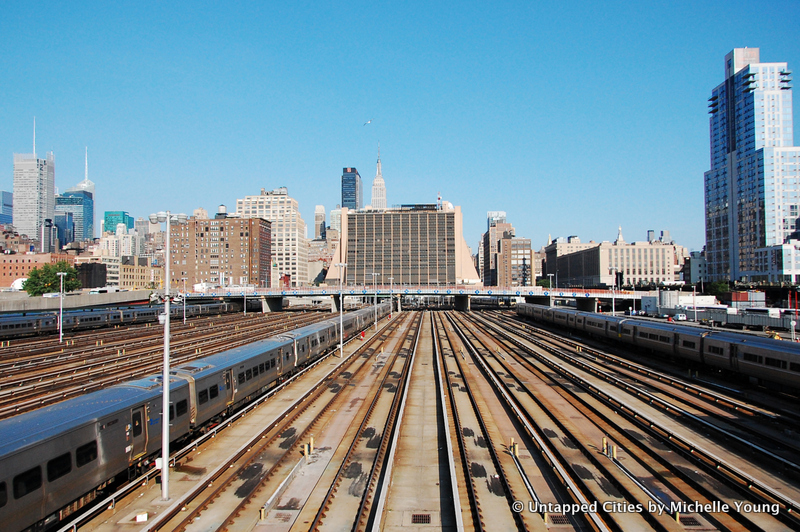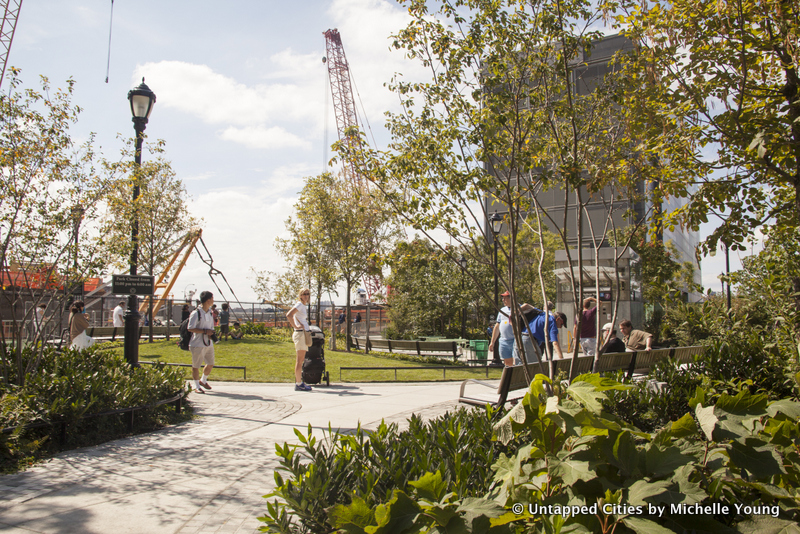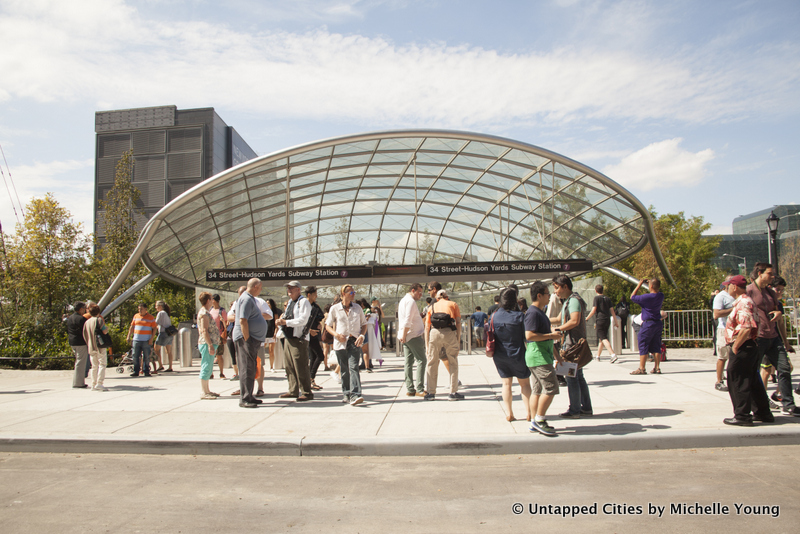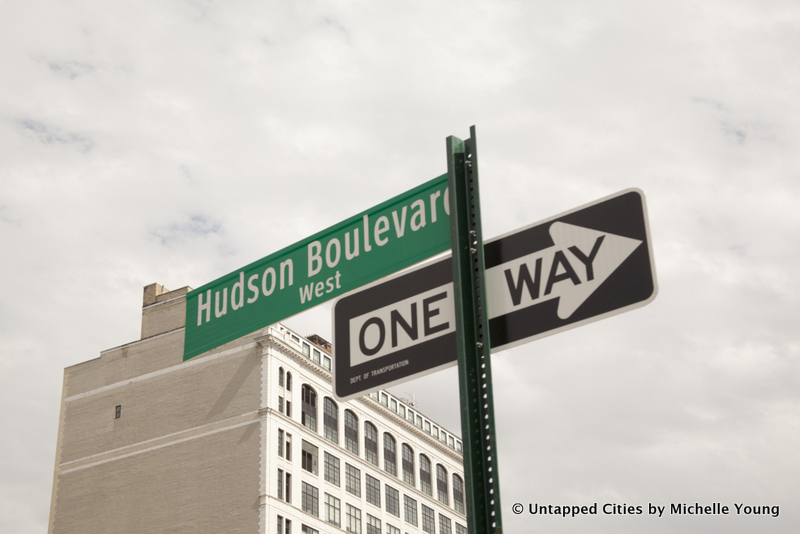2. Hudson Yards

According to the City government, it is estimated that the New York region will see over 440,000 new workers, requiring 111 million square feet of new work space by 2025. To accommodate this increasing demand in office space, Manhattan’s latest and probably last frontier for redevelopment is Hudson Yards, the largest real estate development in United States history, exceeding One World Trade Center and Brooklyn’s Barclays Center.

Hudson Yards pre-decking in 2011, view from High Line Section 3, before renovation
Hudson Yards was the underutilized area in Manhattan’s Far West Side, between West 30th Street and West 34th Street, Tenth Avenue to the Hudson River. West Side Yard, a sunken rail yard wedged above the High Line and two blocks away from Penn Station. These tracks act as a staging area for Long Island Rail Road trains originating from Penn Station every day. Underneath the tracks are three tunnels, one in the direction of New Jersey, and the other two towards Albany. Interestingly enough, engineers who built the rail yard in the 1980s already foresee one day that developers would pave over it, so they left a small gap that runs around the boundary of the yard, leaving space for structural members to be laid down without being in the way of traffic.

Hudson Park
Today, 33 acres of the site is decked over and is below grade to accommodate new developments on top. Hudson Yards is a city floating above the rail yard on highly engineered network of caissons as deep as 80 feet. The project is expected to be fully completed in 2024 and will create 20 million square feet of new offices, apartments, and retail outlets.

The new streets of this micro city mostly follows the Manhattan grid, except for the four acre “Hudson Park” that will extend from West 33rd to West 39th Street and when completed, all the way to West 42nd Street. This pedestrian haven cuts through the site diagonally much like Broadway, but perhaps creating a greener and costume-character-free version of Times Square. Hudson Park and Hudson Boulevard opened with the Hudson Yards 7 line extension subway station in 2015.

To enter New York’s newest “city”, a $2.4 billion investment was made to extend the 7 subway line to connect Hudson Yards to Times Square and 17 of the City’s 21 subway lines. Opened in September 2015, the 34th Street-Hudson Yards station, designed by Dattner Architects, is New York’s first new station in 25 years, and is where most people first experience Hudson Yards.





